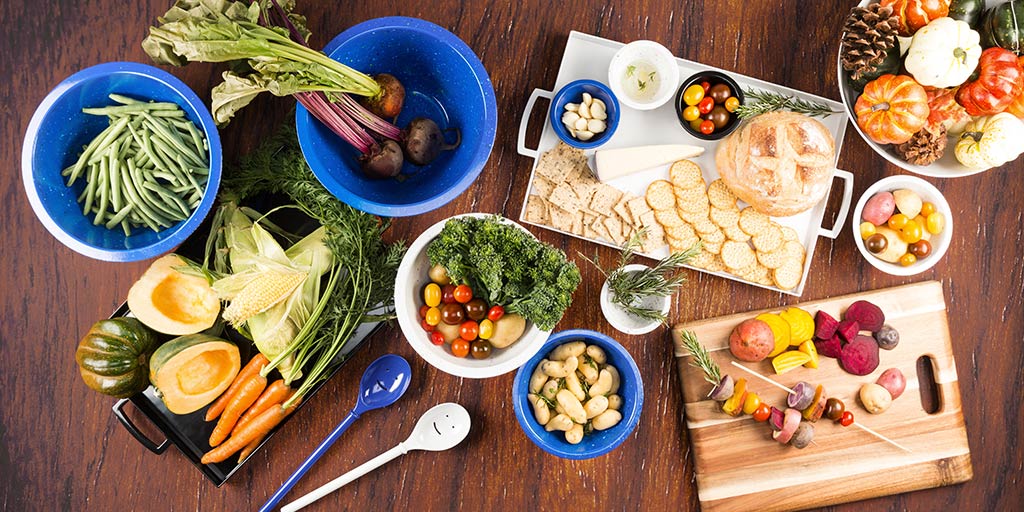
Tips, Tricks, and Trivia
Every meal, same story: “do I have to eat the vegetables?” Yes you do, young ones (and older ones too), but don’t worry. Just because they’re healthy doesn’t mean they can’t taste good, and vegetables always taste good when you know the secret to preparing them. Roasting vegetables in the oven is a great way to add deliciously crispy texture and enhance both flavor and natural sweetness. It has other health benefits as well, including increased nutritional value for certain vegetables like carrots and tomatoes. Plus, roasting vegetables is a relatively simple process that’s easy to adapt to any type of vegetable, as well as your own personal preferences.
Step 1: Preheat the oven. The temperature for roasting vegetables is somewhat contentious, but most seem to agree on 400–450°F. If you’re new to roasting, 425°F is a good place to start, and you can adjust the temperature up or down as you prefer. You can even go as low as 250°F—although it takes longer, a lower temperature cooks the inside and outside of the vegetable at a more even pace. This method results in concentrated flavor and a delicate texture , and is ideal for larger wedges or even whole vegetables.
Step 2: Chop the vegetables. Start with roasting one vegetable by itself, or choose vegetables with similar densities and cooking times. Make sure every piece is the same size—smaller pieces means shorter cook time, as well as a more even application of heat and more surface area for crisping.
Step 3: Add seasoning. Olive oil is a popular choice, but you can use other fats as well (make sure the smoke point isn’t too much lower than your oven temperature, or the fat could start to break down in the higher heat) . You can either drizzle your veggies after you’ve arranged them for the oven, or toss them in a bowl to coat them evenly. Or, if you’re trying to keep your calorie count low, go oil-free (like in this Rainbow Roasted Vegetables recipe)! Then, sprinkle with salt, pepper, and herbs to taste.
Step 4: Roast your vegetables. Use a baking sheet or baking dish and spread your veggie pieces out, leaving plenty of room. You might have to use a second sheet, but make sure they’re not crowded or the vegetables might steam instead of roast. Now, how long should you set the timer? As mentioned, the length of time for roasting vegetables will change depending on the type of vegetable and the size of the pieces. Roast until the pieces are fork-tender, and don’t panic if the edges get slightly charred—it adds flavor! But just to give you an idea, here are some cooking time estimates (for a 425°F oven) :
- Greens (kale, mustard greens, collard greens): 6-10 minutes
- Thin, soft vegetables (yellow squash, zucchini, peppers, green beans, asparagus, tomatoes): 10-20 minutes
- Hearty crucifers (broccoli, cabbage, Brussels sprouts, cauliflower): 15-25 minutes
- Mushrooms: 20-40 minutes
- Onions: 30-45 minutes
- Winter squash: 30-60 minutes
- Root vegetables (carrots, potatoes, sweet potatoes, beets): 35-60 minutes
And that’s it! Easily adaptable and open to experimentation, this cooking method could become your go-to in a wide variety of dishes. Use roasted vegetables in omelets or on pizzas, make soup out of roasted vegetable puree, or just serve them by themselves on the side. You’ll have a healthy and delicious meal in no time!



